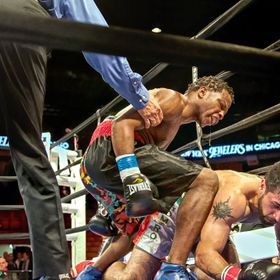sbw123
FollowI think this is a European Jumping spider, also known as a zebra spider. It is maybe 1-4 of an inch in size, and yes, it does jump around - a lot. This is a s...
Read more
I think this is a European Jumping spider, also known as a zebra spider. It is maybe 1-4 of an inch in size, and yes, it does jump around - a lot. This is a single, 1:1 ratio shot, with a diffused speedlight attached to the camera, edited using Nik's Dfine, Color Efex Pro, and Lightroom
Read less
Read less
Views
113
Likes
Awards
Summer Selection
Categories
Same photographer See allBehind The Lens
Discover more photos See all
Behind The Lens
Location
This European Jumping Spider was jumping around the windowsill in our bedroom.Time
It was mid-afternoon, and I have no idea why I was in the bedroom with my camera. I must have been looking for house insects.Lighting
I used a diffused camera mounted flash, with the camera set on manual to "stop the action."Equipment
Handheld, using a Nikon d5100 camera, Tokina 100mm macro lens, and a Flashpoint flash with diffuser.Inspiration
I really enjoy how crazy bugs look up-close, and spiders are no different. I was simply trying to see a small part of the world a bit bigger so we could see it.Editing
I used the Detail Extractor filter in Color Efex Pro to make the spider "pop" a bit, and then used Lightroom to tweak the colors.In my camera bag
I have a pretty simple collection of gear: Nikon d5100 camera, Tamron 28-75, Tokina 11-16, Tokina 100mm macro, and a Vanguard tripod.Feedback
Getting the right bug photo takes patience and many, many attempts. Set the camera to the right focal length - I usually choose 1:1 ratio - and then move your body back and forth until the subject comes into focus. I've found that moving back to front works best for getting the most of the bug into focus. At a 1:1 ratio, the depth of field is razor thin. Everybody shake will cause you to refocus - hence the patience and many, many attempts. Also, a flash helps tremendously to "freeze the action," v. providing enough light to illuminate the subject.











































